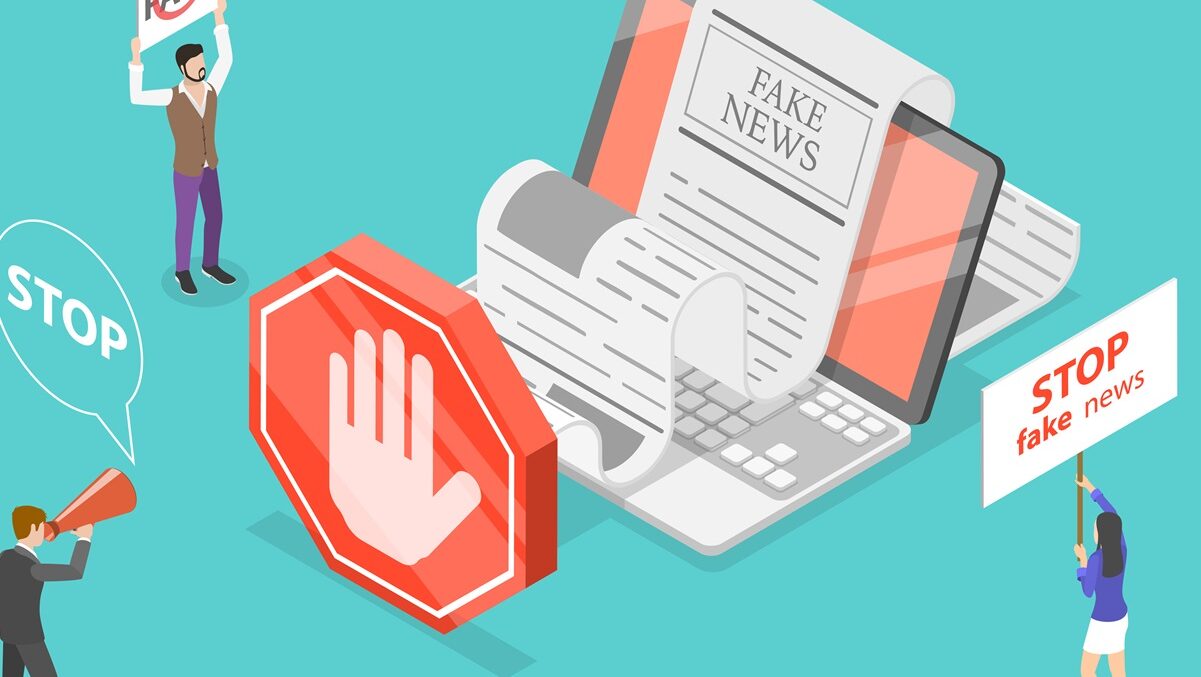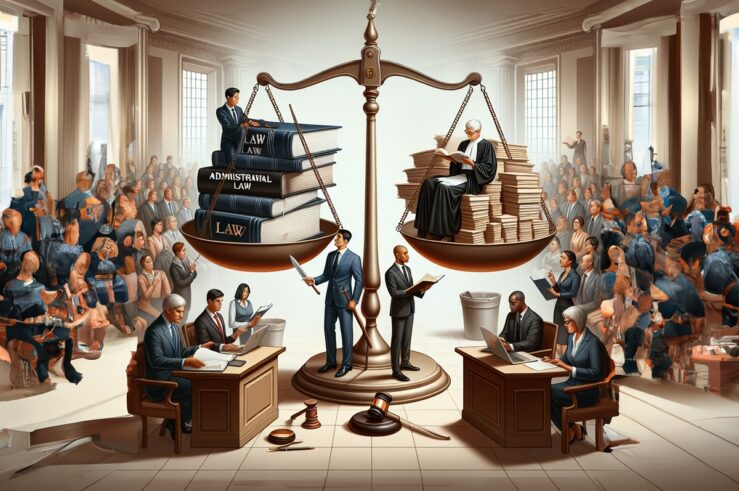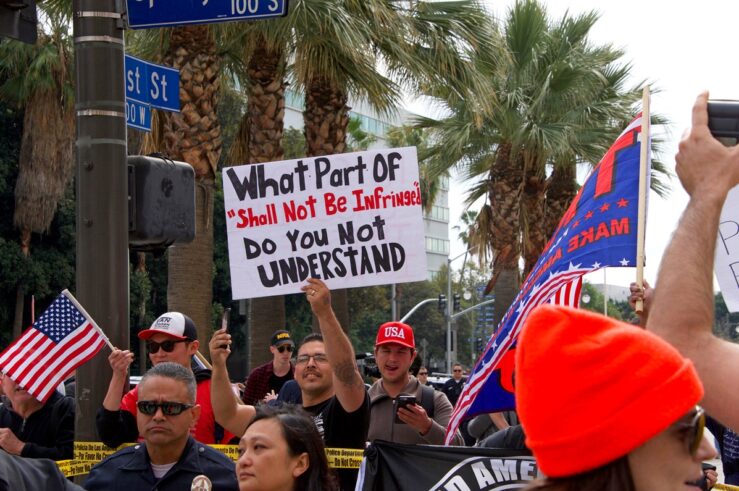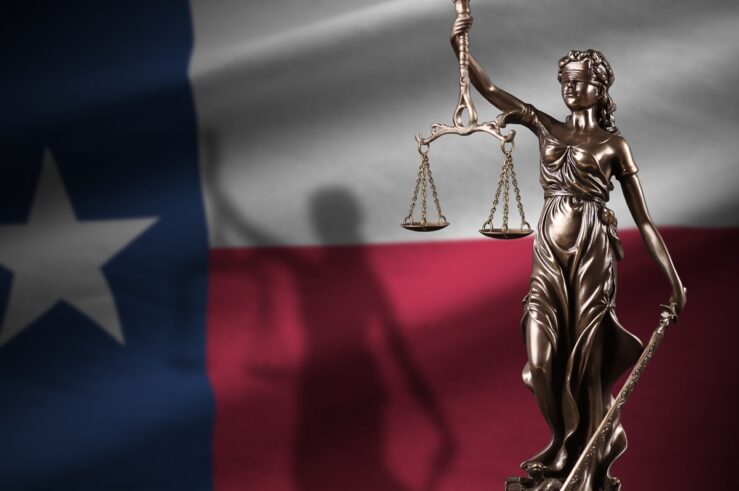
After a lot of anticipation from Supreme Court watchers, the Murthy v. Missouri opinion has finally been released. As the oral argument suggested, standing was the issue for the Court, who in a 6-3 decision written by Justice Amy Coney Barrett ruled that none of the plaintiffs had standing, due to a lack of traceability and redressability of the alleged injuries. The result: challenging backdoor censorship just got a lot harder.
The topline result of the case is that government efforts to suppress online speech may not be practically challengeable in court unless social-media companies themselves push back with lawsuits against coercion. This is bad for the marketplace of ideas the First Amendment is supposed to protect (as we argued in our International Center for Law & Economics amicus brief, and which the dissent picked up on, even though it didn’t cite us).
But there are some positives from the case as well—namely, that the Court has embraced, either implicitly (in the majority opinion) or explicitly (in the dissent written by Justice Samuel Alito), that private entities like social-media companies “may publish or decline to publish whatever they wish.” This likely means the Court will side in favor of NetChoice in cases soon to be released.
Below, I will go into more detail on each of these points. First, I will explain the standing issue that divided the Court. Then, I will discuss what Murthy (and NRA v. Vullo) means for backdoor government efforts to suppress speech going forward. Then, I will consider what Murthy means for the pending NetChoice cases.
The Decision: All About Standing
Rather than get to the merits of whether or not the Biden administration violated the First Amendment by allegedly coercing social-media companies into restricting protected speech, the Court instead reversed, on standing grounds, the 5th U.S. Circuit Court of Appeals’ judgment upholding the preliminary injunction.
Standing doctrine is grounded in the Court’s jurisdiction in the Constitution being limited to “cases and controversies.” To establish standing, a plaintiff must be able to prove (and continue to prove at each successive level of litigation) that there is:
- A concrete and particularized injury that is actual or imminent;
- That it is fairly traceable to the challenged action; and
- That it is redressable by a favorable ruling.
Here, the Court focused on traceability and redressability, finding that, since the plaintiffs were not looking for compensatory relief based on past injuries but instead asking for relief against future injuries, the plaintiffs needed to allege more than past injuries, but also that it is likely that future injuries will occur. Specifically, for the majority, “the plaintiffs must show a substantial risk that, in the near future, at least one platform will restrict the speech of at least one plaintiff in response to the actions of at least one Government defendant.”
The majority easily disposed of all but one plaintiff on traceability grounds, finding “the record of past restrictions… lack… specific causation findings with respect to any discrete instance of content moderation.” Because “the platforms had independent incentives to moderate content and often exercised their own judgment,” the plaintiffs did not sufficiently show that government action caused any particular moderation decision.
The only plaintiff that the majority thought had any plausible argument for traceability was Jill Hines. The dissent focused entirely on her, as well, in its standing analysis. Therefore, the rest of this description will focus on her.
The majority found that her injuries were “the best showing of all the plaintiffs,” but that: “Still, Facebook was targeting her pages before almost all of its communications with the White House and the CDC, which weakens the inference that her subsequent restrictions are likely traceable” to the government. The dissent disagreed strongly, arguing:
Here, it is reasonable to infer (indeed, the inference leaps out from the record) that the efforts of the federal officials affected at least some of Facebook’s decisions to censor Hines. All of Facebook’s demotion, content-removal, and deplatforming decisions are governed by its policies. So when the White House pressured Facebook to amend some of the policies related to speech in which Hines engaged, those amendments necessarily impacted some of Facebook’s censorship decisions. Nothing more is needed. What the Court seems to want are a series of ironclad links—from a particular coercive communication to a particular change in Facebook’s rules or practice and then to a particular adverse action against Hines.
The dissent noted that, in previous standing cases, the Court allowed cases to continue despite not having the “series of ironclad links” the majority demands here. For instance, in the Department of Commerce v. New York, New York was not required to determine whether noncitizen households failed to respond to the U.S. Census because of a proposed citizenship question, rather than other reasons like avoiding detection from authorities, because “it was clear the citizenship question would dissuade at least some noncitizen households from responding.”
The majority also found the risk of future injury was unlikely, because the pressure campaigns conducted by the White House and the Centers for Disease Control and Prevention (CDC) ended in 2022:
On this record, it appears that the frequent, intense communications that took place in 2021 had considerably subsided by 2022. (Perhaps unsurprisingly, given the changed state of the pandemic.) It is thus very difficult for Hines to show that she faces future harm that is traceable to officials in the White House and the Surgeon General’s Office… Hines (along with the other plaintiffs) has therefore failed to establish a likelihood of future injury traceable to the White House or the Surgeon General’s Office. Likewise, the risk of future harm traceable to the CDC is minimal. The CDC stopped meeting with the platforms in March 2022. Thereafter, the platforms sporadically asked the CDC to verify or debunk several claims about vaccines. But the agency has not received any such message since the summer of 2022.
The dissent argues that the majority largely ignores the lasting impact of the moderation policy changes by Facebook in response to government demands, noting that the effects of the policy changes brought about in response to the coercion persisted beyond when Hines sued. Moreover, “the White House threats did not come with expiration dates.” On the contrary, “the record suggests that Facebook did not feel free to chart its own course when Hines sued; rather, the platform had promised to continue reporting to the White House and remain responsive to its concerns for as long as the officials requested.”
Finally, the Court found that the plaintiffs failed to show redressability, stating that while a “court could prevent these Government defendants from interfering with the platforms’ independent application of their policies… platforms remain free to enforce, or not to enforce, those policies—even those tainted by initial governmental coercion.” And since the platforms are not parties to the suit, they would not be bound by any outcome here.
The dissent argues, however, that this was not the redressability standard in Massachusetts v. EPA or Department of Commerce, where court action could not necessarily (and didn’t in Department of Commerce) lead to the outcomes plaintiffs desired after adjudication. In both of those cases, it was enough that the courts could enjoin the government action that contributed to the negative outcome the plaintiffs alleged.
What Does This Mean for Backdoor Government Efforts to Suppress Speech?
When it comes to coercion, the Court has now addressed it twice in this term. NRA v. Vullo makes clear that the standard for considering such issues comes from Bantam Books. But unfortunately, we don’t know how that standard applies in the social-media context presented in Murthy, because it was kicked on standing. Most concerning from the case is that it now appears significantly harder to bring what is already a difficult-to-prove claim of backdoor government censorship. As I argued after the oral arguments:
If the Court decides to avoid the merits of this case under such a lack-of-standing reasoning, it would allow government agents to engage in egregious censorship activity so long as they did a good job of not creating a record of asking for particular individuals’ speech to be suppressed. The government could do this by calling for entire types of content or viewpoints to be censored without targeting specific people.
In Vullo, the coercion efforts were very much out in the open—through the front door, if you will. But the harmed entity, the National Rifle Association, was also the plaintiff challenging the action.
Here, the plaintiffs were individuals who complained that they were censored by the social-media companies as a result of the government efforts. Social-media companies may need to be the plaintiffs in cases alleging coercion going forward, in light of the high standing hurdles the Court has put in place for individuals claiming censorship.
Now, it is important to note what the Court is not saying. This case arose in the preliminary-injunction context, after discovery. This means more is required to continue to maintain standing than at the motion-to-dismiss stage. As the Court said, “[a]t the preliminary injunction stage, then, the plaintiff must make a ‘clear showing’ that she is ‘likely’ to establish each element of standing… Where, as here, the parties have taken discovery, the plaintiff cannot rest on ‘mere allegations,’ but must instead point to factual evidence.” Thus, as long as a plaintiff can allege facts that would establish traceability to the standards outlined here, they should be able to get to at least discovery to be able to prove it.
But despite this caveat, Murthy nonetheless does restrict significantly the pool of possible plaintiffs in backdoor censorship cases. Those who have their speech suppressed online will likely not know if it is the independent work of social-media companies or due to government efforts unless some rare event like the “Twitter Files” happens, and the social-media companies let them know. So a lot of backdoor censorship could continue without any court review.
This is important, because there are very strong reasons to believe the complained-of conduct does violate the Bantam Books/Vullo standard, as found by the district court, 5th Circuit, and the Supreme Court dissent in this case.
In fact, the dissent’s outlining of the case against Facebook in respect to Jill Hines merits attention. There, the dissent argues persuasively from the record that the conduct of high-ranking White House officials and the Surgeon General’s Office violates the First Amendment.
First, since the White House is in charge of the executive branch, including those that could bring antitrust cases, data-privacy enforcement actions, and negotiate international data-transfer rules (as well as propose changes to Section 230), it is “beyond any serious dispute [they] possessed the authority to exert enormous coercive pressure.”
Second, the communications coupled demands with “thinly veiled threats” that became more explicit over time. “The natural interpretation” of these communications was “that the White House might retaliate if the platforms allowed free speech, not if they suppressed it.” Much as we argued in our amicus brief, the dissent argues that this goes far beyond the public bully pulpit:
If everything that top federal officials say behind closed doors to any private citizen must also represent the exercise of the President’s bully pulpit. That stretches the concept beyond the breaking point.
Third, Facebook clearly acceded to these demands in respect to changing their policies and enforcement in a way that harmed Jill Hines, as their internal communications made clear they didn’t agree with the White House critiques but went along with their requests anyway:
Facebook again took stock of its relationship with the White House after the President’s accusation that it was “killing people.” Internally, Facebook saw little merit in many of the White House’s critiques. One employee labeled the White House’s understanding of misinformation “completely unclear” and speculated that “it’s convenient for them to blame us” “when the vaccination campaign isn’t going as hoped.” Committee Report 473. Nonetheless, Facebook figured that its “current course” of “in effect explaining ourselves more fully, but not shifting on where we draw the lines,” is “a recipe for protracted and increasing acrimony with the [White House].” Id., at 573. “Given the bigger fish we have to fry with the Administration,” such as the EU-U.S. dispute over “data flows,” that did not “seem like a great place” for Facebook-White House relations “to be.” Ibid. So the platform was motivated to “explore some moves that we can make to show that we are trying to be responsive.” Ibid. That brainstorming resulted in the August 2021 rule changes. See supra, at 13, 19–20.
In sum, the First Amendment case against the federal government officials in Murthy appears strong on the merits. But standing complications may doom these types of cases going forward, unless social-media companies (or other intermediaries who affect third-party speech) are the ones to bring the court challenge. As the dissent eloquently put it:
The Court, however, shirks [its] duty and thus permits the successful campaign of coercion in this case to stand as an attractive model for future officials who want to control what the people say, hear, and think. That is regrettable. What the officials did in this case was more subtle than the ham-handed censorship found to be unconstitutional in Vullo, but it was no less coercive. And because of the perpetrators’ high positions, it was even more dangerous. It was blatantly unconstitutional, and the country may come to regret the Court’s failure to say so. Officials who read today’s decision together with Vullo will get the message. If a coercive campaign is carried out with enough sophistication, it may get by. That is not a message this Court should send.
What Does This Mean for the NetChoice Cases?
There is, however, some good news to come out of this case. Both the majority and dissent seem to agree that social-media companies have the right to editorial discretion under the First Amendment.
The Court’s opinion rests implicitly on this strong public-private dichotomy in its standing analysis. Since the plaintiffs could not prove the government was the cause of their injuries, rather than the private companies, then there is no traceability or redressability in this case. This tracks strongly onto the state-action analysis that ICLE offered in its amicus brief in the NetChoice cases:
The First Amendment protects the right of social media platforms to serve the speech preferences of their users through their moderation policies.
The “text and original meaning [of the First and Fourteenth Amendments], as well as this Court’s longstanding precedents, establish that the Free Speech Clause prohibits only governmental abridgment of speech. The Free Speech Clause does not prohibit private abridgment of speech.” Halleck, 139 S. Ct. at 1928. The First Amendment’s reach does not grow when private property owners open their property for speech. If such property owners were “subject to First Amendment constraints” and thus “lose the ability to exercise what they deem to be appropriate editorial discretion within that open forum” they would “face the unappetizing choice of allowing all comers or closing the platform altogether.” Id. at 1930. That is, the First Amendment respects—indeed protects—private ordering.
But just as importantly, Justice Alito’s dissent, joined by Justices Clarence Thomas and Neil Gorsuch, also reflects this understanding. While these justices seemed most skeptical the social-media companies’ arguments in the NetChoice oral arguments, the dissent nonetheless says this in Murthy:
Of course, purely private entities like newspapers are not subject to the First Amendment, and as a result, they may publish or decline to publish whatever they wish. But government officials may not coerce private entities to suppress speech, see National Rifle Association of America v. Vullo, 602 U. S. 175 (2024), and that is what happened in this case.
In other words, there seems to be unanimous agreement that private entities can choose to publish or not. It is difficult to see how the dissent in Murthy could find a way to argue social-media companies are not private entities with the same right to editorial discretion in the NetChoice cases. Following this logic, it seems that the Court should side with NetChoice when those cases are released.
Conclusion
The future of online speech remains uncertain as we look forward to the NetChoice cases being released—possibly as soon as tomorrow or the day after. After reading Murthy, it does seem likely the Court will rule in favor of NetChoice. But it nonetheless remains concerning that the Court has made it more difficult to bring what appears to be meritorious cases against backdoor government censorship.




